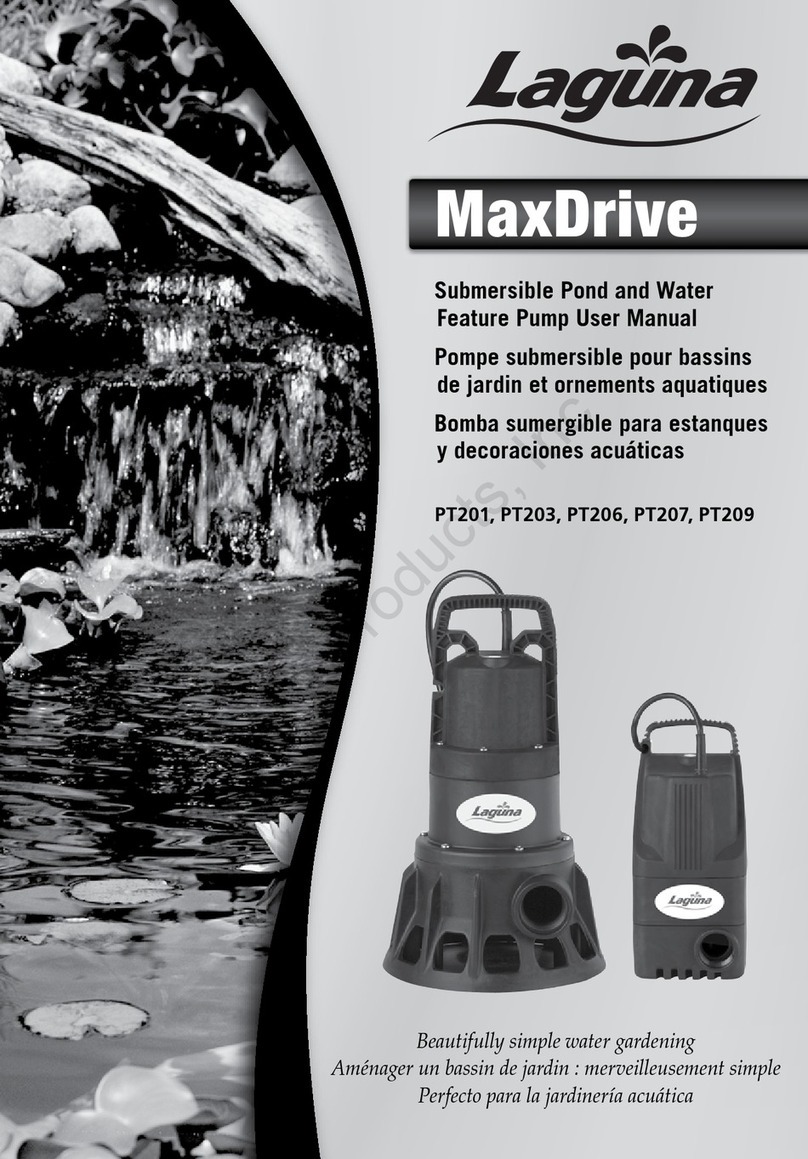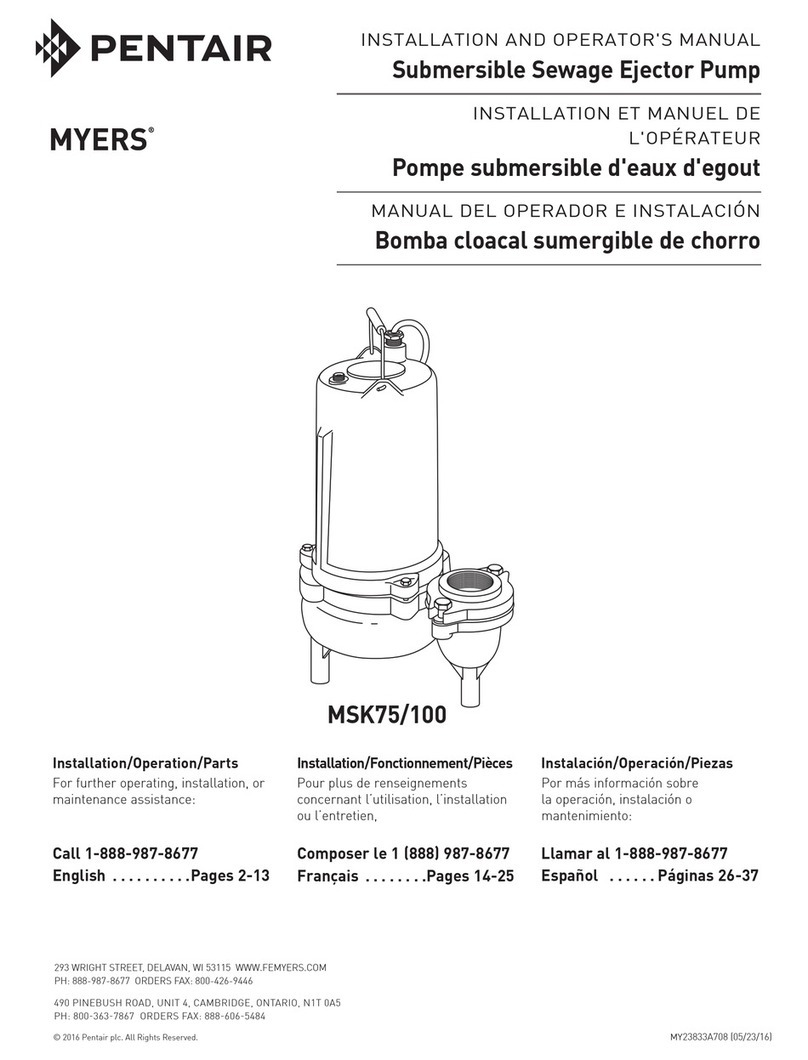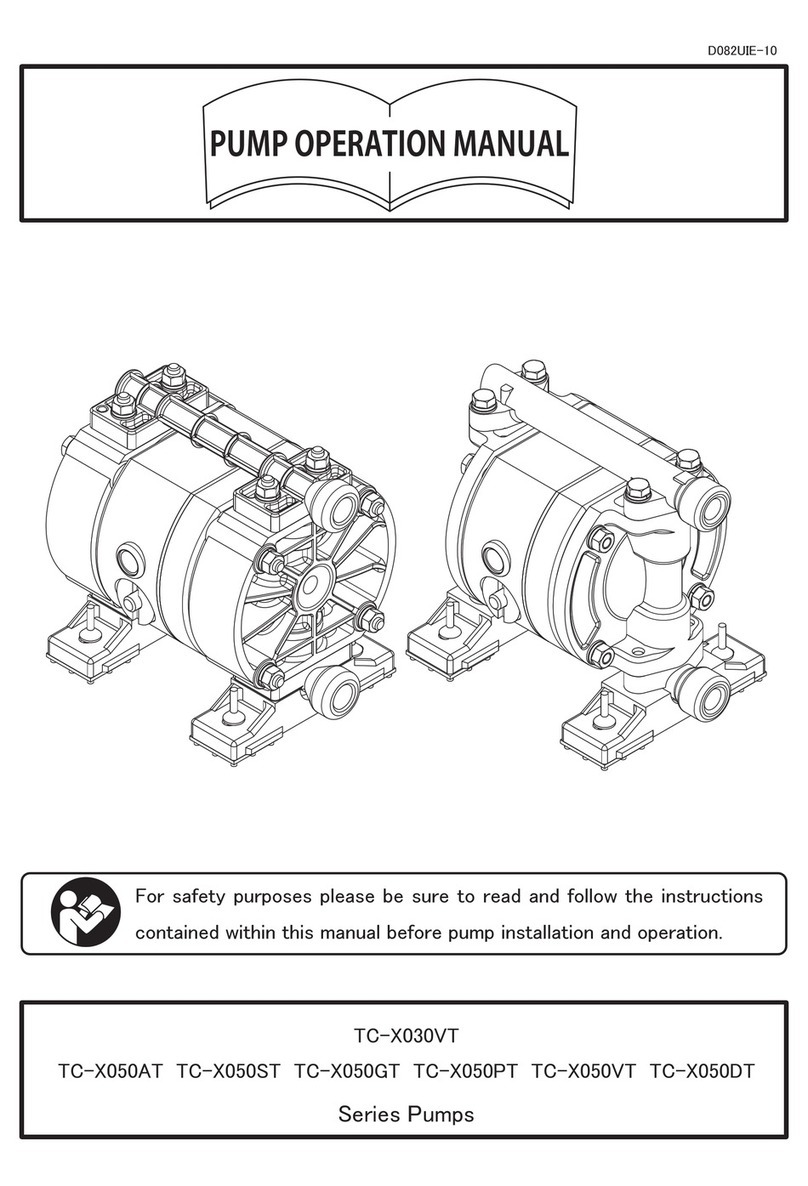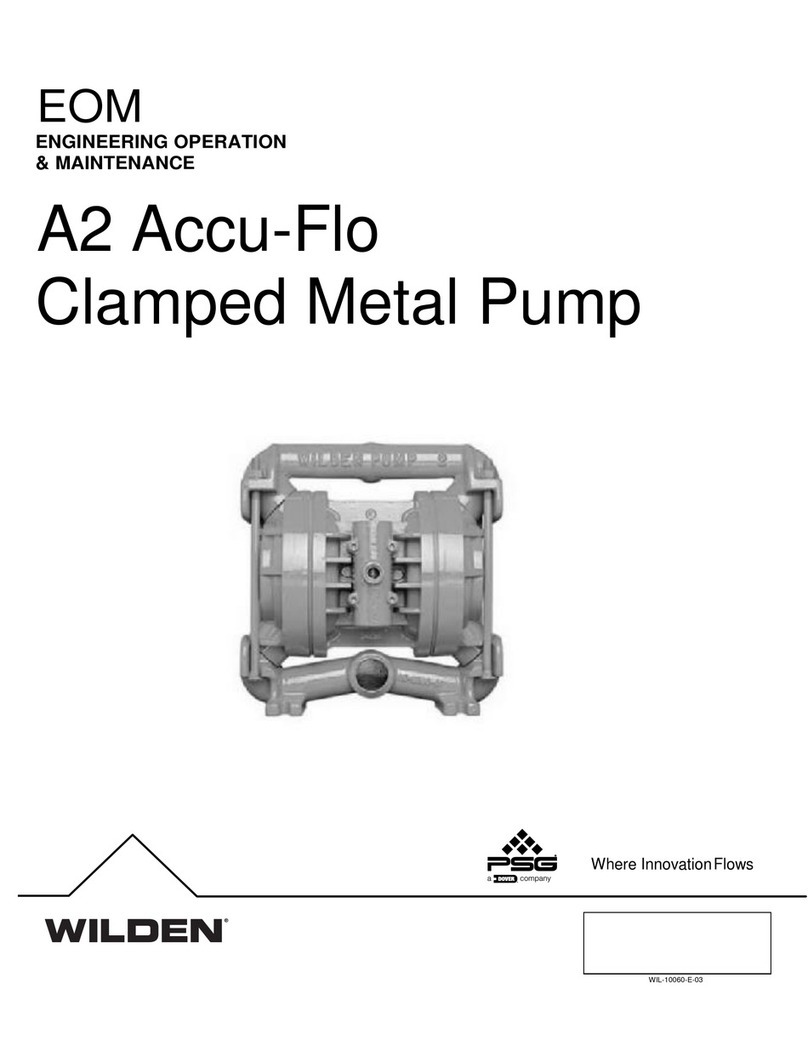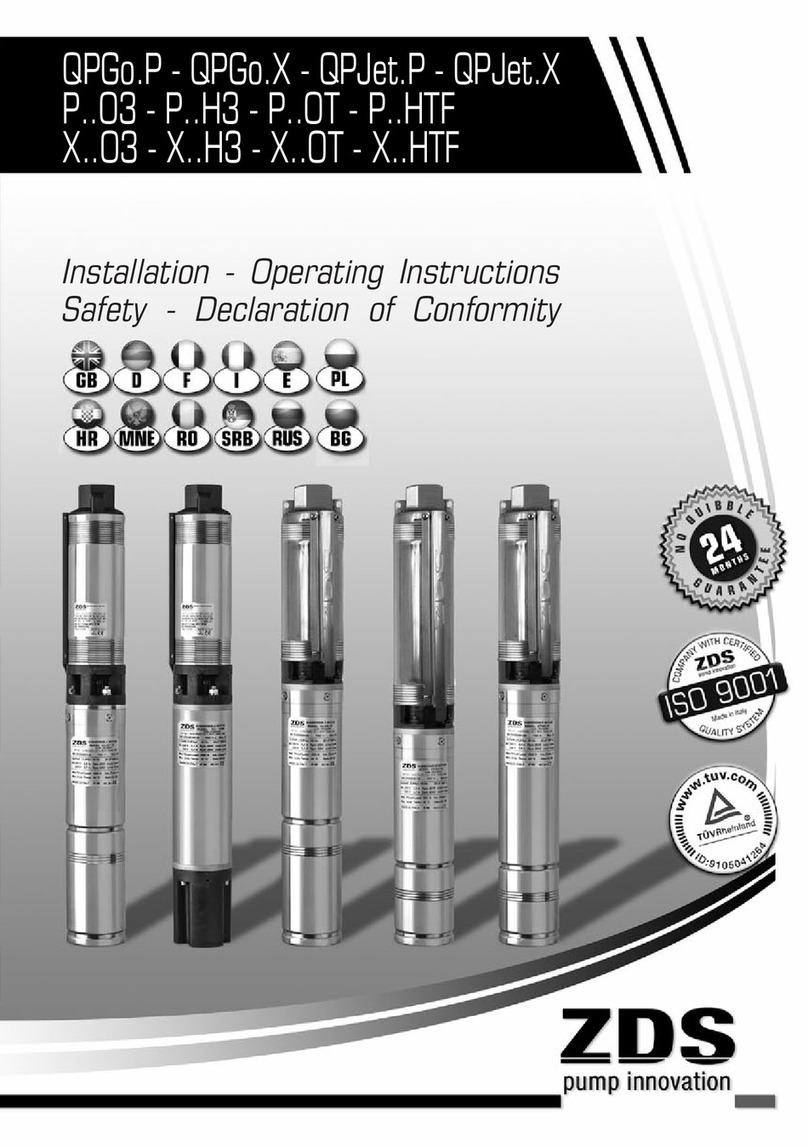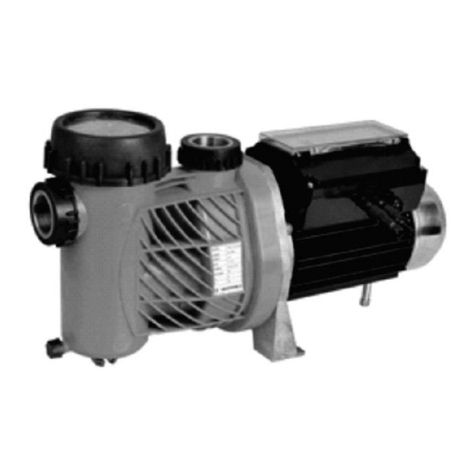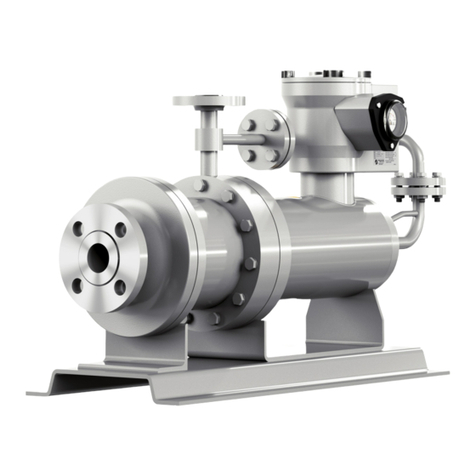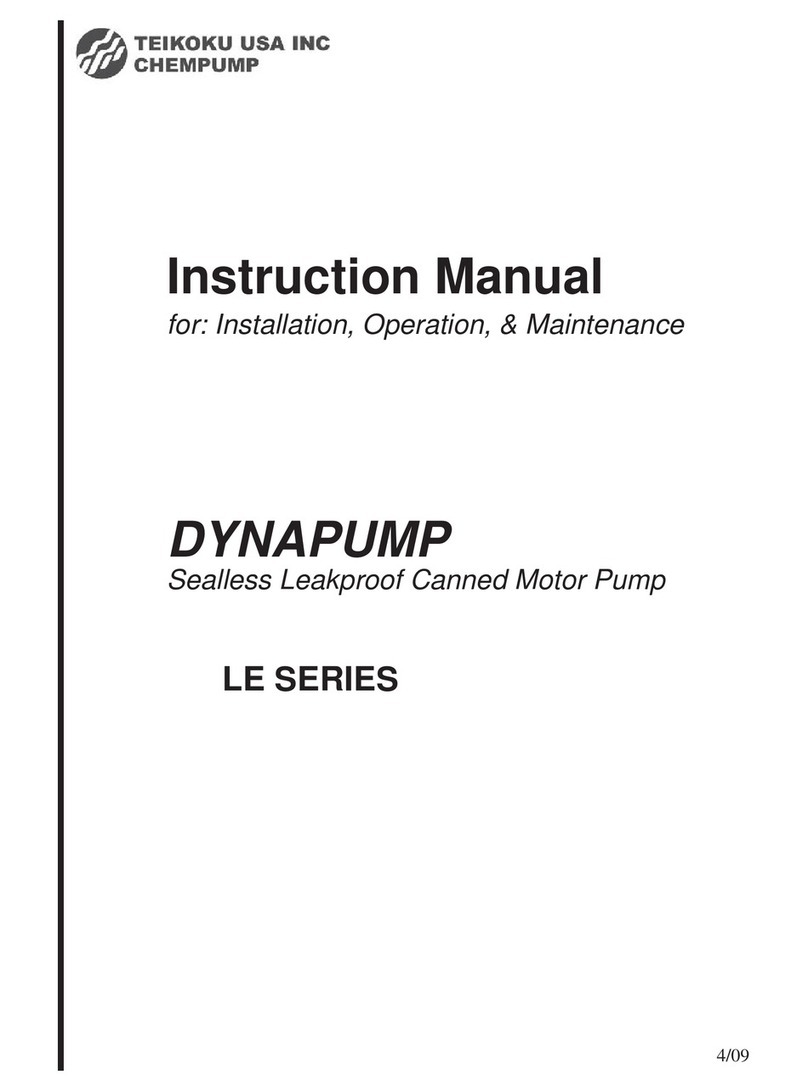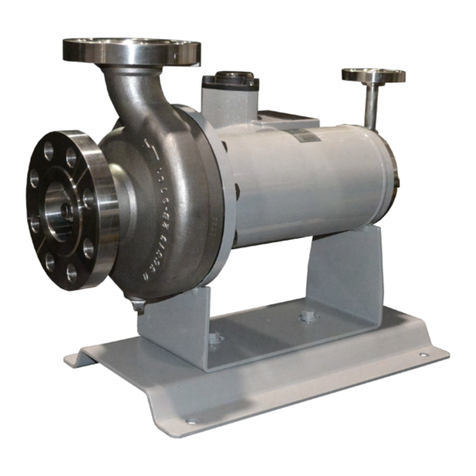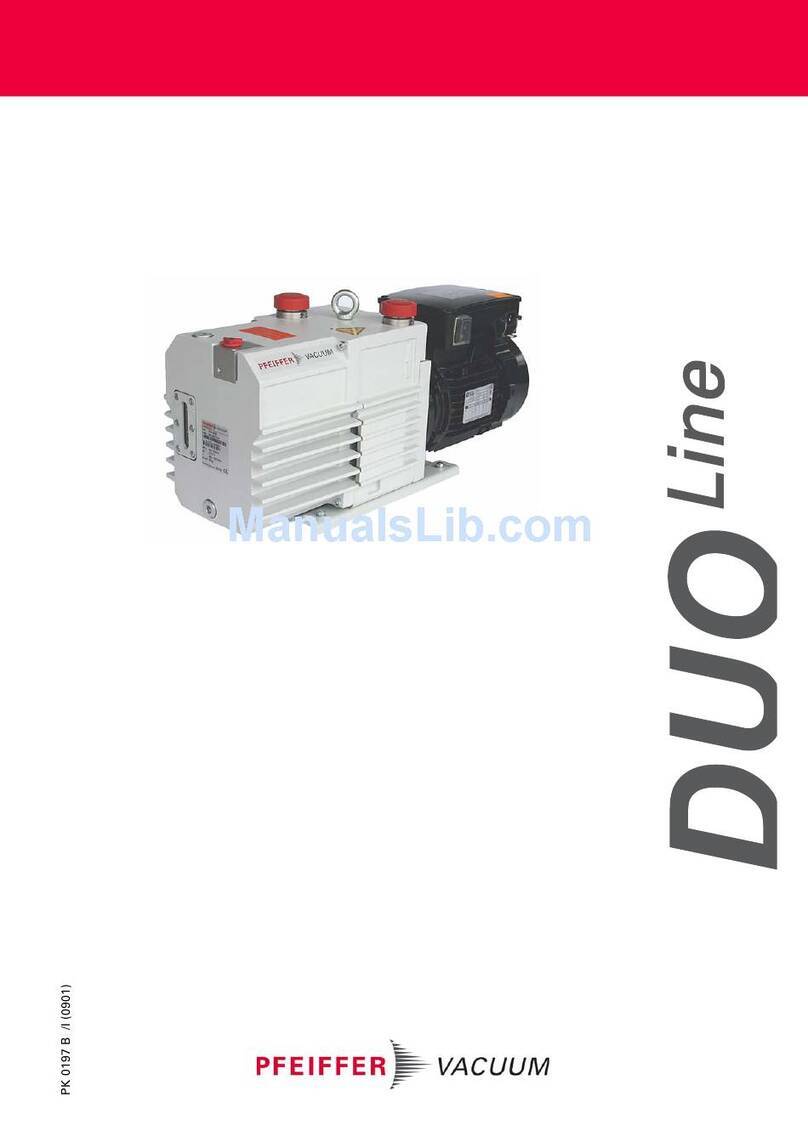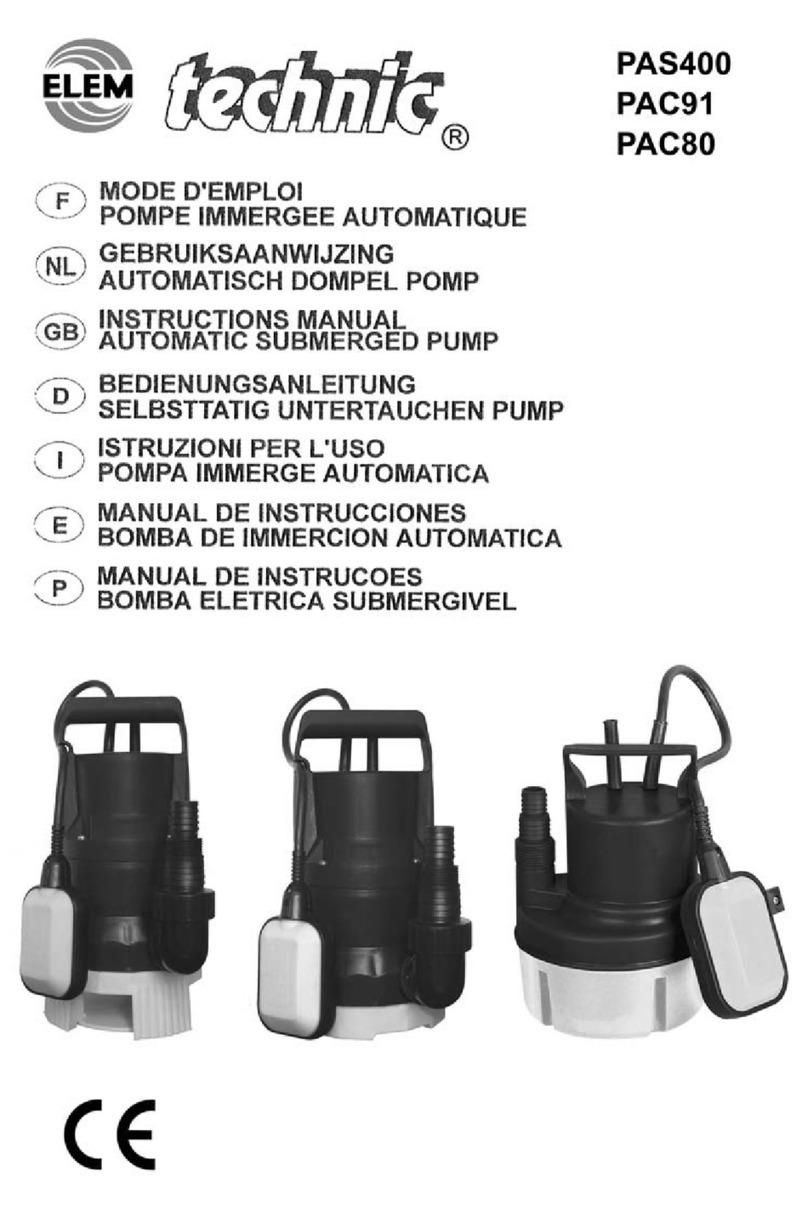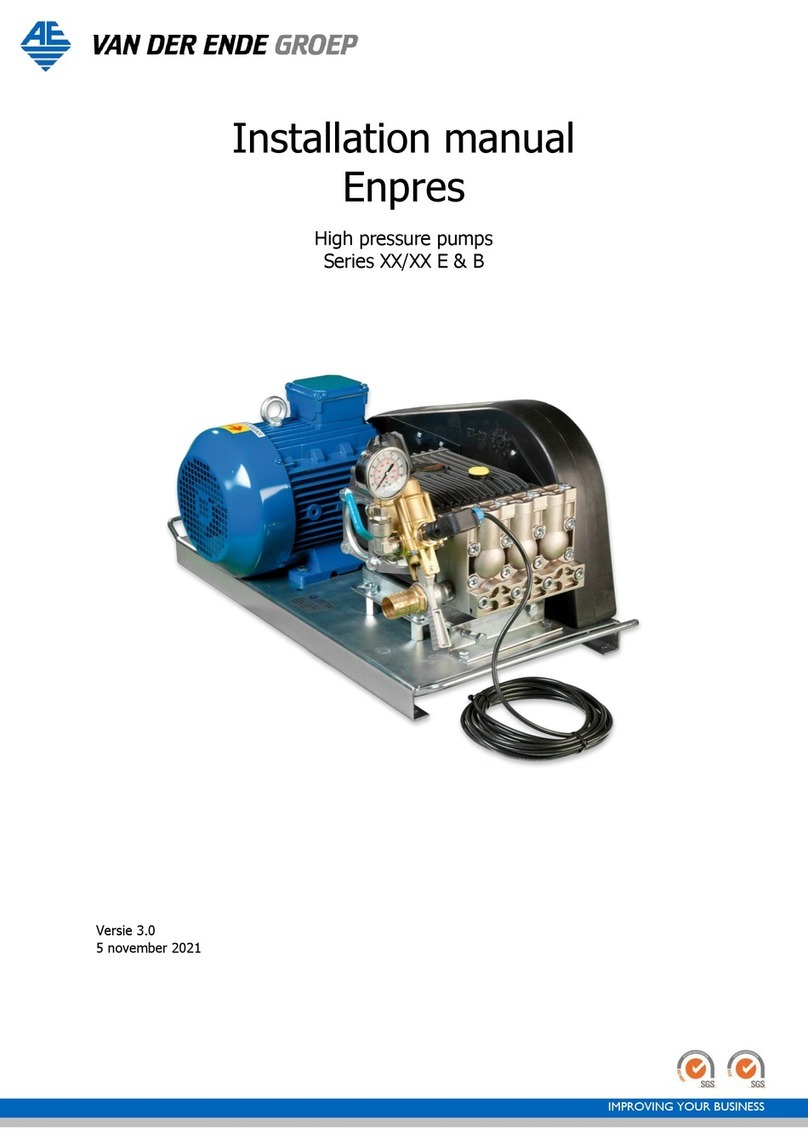
Teikoku USA | Chempump Instruction Manual NC-Series 022020
24. Remove the rear shaft sleeve by removing the shaft sleeve
retainer in the rear with a spanner wrench (Do not use a pipe
wrench). Note: This is a left hand thread.
Pull the shaft sleeve off the shaft. Sleeves are centered with "o"
rings which may present some resistance. Remove the shaft key
and “o” rings from the shaft.
4.3 Periodic Inspection
The TRG meter should be checked periodically during operation.
If the initial reading (TRG) was not recorded, then the color coding
system discussed in Table 2-1 may be used to determine bearing
changing intervals.
4.3.1 Bearings
Since the bearings in this pump are lubricated by the process fluid,
it is essential that bearing inspection and replacement periods be
based on experience in each particular installation. Bearing life will
depend, to some extent, on variable factors including lubrication
quality, temperature, number of starts and stops, viscosity, and
suspension content of the fluid being pumped, as well as ambient
temperature and atmospheric conditions of the operational area.
Each time one of these factors is changed, compensation must be
applied in bearing inspection periods.
As noted above, the TRG meter should be checked periodically
during operation. If the initial reading (TRG) was not recorded,
then the color-coding system in Table 2-1 may be used to
determine bearing changing intervals. This inspection is necessary
to determine the rate of bearing wear, thereby enabling setup of
a proper inspection and replacement schedule. See Table 4-3 for
the maximum wear allowable.
If the inspection indicates that bearings are not wearing or are
wearing very slightly, the next inspection may be put off for an
additional 1,500 running hours, or three months of operation,
whichever occurs first. If inspection indicates only slight wear, the
interval may be lengthened.
If bearings must be changed at the initial inspection, they will
need to be changed again in the time period which necessitated
a change at the initial inspection, i.e., 1,500 running hours.
Frequency of periodic bearing inspection can best be determined
by experience, and from these inspections, the time for
replacement can best be indicated.
Bearings can be inspected and replaced without removing the
pump casing from the line. No main piping connections need to
be broken. Refer to Section 4.2 for Disassembly and Section 4.5
for Reassembly.
In the event the TRG bearing wear monitor indicates bearing wear
on the wear indicator:
1. Measure the inside diameters of the front and rear bearings
and compare to the diameter of the rotor shaft journal. If the
difference in diameters is greater than that indicated in Table
4-3, replace the bearings.
2. Inspect the thrust faces of the front and rear bearings. If any
scoring wear is visualized, measure the length of the bearings.
Replace the bearing if the measured length is less than that
indicated in Table 4-3.
3. Examine the bearings for any grooving or scoring, particularly
on the inside diameter and thrust faces. The existence of
grooving or scoring indicates the presence of solids or foreign
matter in the system which should be eliminated prior to
beginning operation again.
4.3.2 Automatic Thrust Balance and End Play
Inspection
The provision of automatic thrust balance design in the NC-Series,
with its close running seal faces and wearing rings to insure
proper balance chamber pressures, requires that a detailed visual
inspection be made of the impeller, adapter/bearing housing,
front and rear thrust washer and the pump casing, at the time
of bearing inspection. During disassembly for bearing inspection,
measure the unit end play and compare with the following value:
Table 4-4. End Play
Model Motor Size End Play (inches)
ALL ALL 0.072 to 0.096
(0.18 to 0.24 CM)
If the end play exceeds the maximum allowable movement, then
the bearings and/or thrust washers are worn and must be replaced.
(It should be noted that under proper operating conditions, wear
on these parts due to axial thrust forces will be negligible). It is
not necessary to check the end play with the pump casing
mounted on the pump.
4.3.3 Rotor Assembly Inspection
The complete rotor assembly should be visually inspected for
cracks, breaks, pitting, or corrosion which might destroy the
effectiveness of the hermetically sealed rotor end covers and
sleeve.
Check the rotor assembly for straightness of the shaft. The shaft
should be running true and the sleeved rotor core within .003"
(.08 mm) of the shaft.
The rotor assembly shaft sleeves and thrust surfaces should also
be visually inspected at the bearing contact area for general
appearance and uniform wear. Excessive undercutting, pitting, or
scoring is cause for replacement.
4.3.4 Stator Assembly Inspection
The complete stator assembly should be visually inspected for
cracks, breaks, pitting, or corrosion in the stator liner which might
Table 4-3. NCT- Series Bearing and Journal Dimensions
Model Unit Shaft Sleeve
Bearing
Inside DIA
Diametrical
Clearance Max Allowable Length
ALL INCHES 1.6220 - 1.6213 1.626 - 1.627 0.004 - 0.0057 .014 3.0
ALL CM 6.38 6.4 0.02 0.005 11.8




















